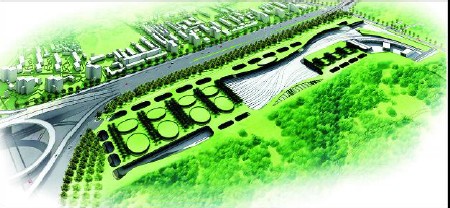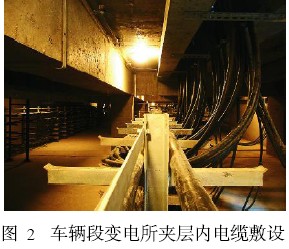1 Outdoor engineering design of the depot
In recent years, large cities in China (such as Beijing, Shanghai, Nanjing, Guangzhou, Shenzhen, Chongqing, Chengdu, Shenyang, Changchun, etc.) are building subways and light rails to solve the increasingly crowded traffic situation. Some cities are even more The line is built at the same time, and each line must have one or two depots or parking lots according to the scale.
The power outside line and road lighting design is an important part of the outdoor engineering design of the depot. Doing a good power line design can ensure the effective functioning of the vehicle segment system function, and it is also a prerequisite for convenient and effective daily maintenance and management of the power line and system expansion. In addition, since the cost of laying outdoor power cables will account for a large part of the total investment, the design of external projects is of great significance in saving total investment.
The author has participated in the design of the Wanliu Depot of Beijing Metro Line 10. Let's talk about the design experience and experience.
2 Comprehensive utilization of external space
Compared with the previous depots, the Wanliu depot was first integrated from the functionality of the building unit, with a small number of units, and the main single building integrated multiple functions. For example, the joint maintenance library concentrates the vehicle maintenance functions of the monthly repair library, the repair library, the temporary repair library, and the spare parts warehouse into one sub-division operation; the comprehensive maintenance building is the office, public security, canteen, bathroom, heat station, Multiple unit buildings such as electrical and mechanical maintenance are combined into one whole, and hierarchical partitions are managed. Figure 1 shows the general plan of the Wanliu vehicle section.

Figure 1 Plan of the Wanliu Depot of Beijing Metro Line 10
In order to achieve coordination with the green landscape of the surrounding golf course, a large platform is built on the east side and the west and north sides of the depot, and the upper part is greened. Thus, the phenomenon of “column standing†appears in the depot, and the platform foundation The platform occupies the underground laying space of each pipeline in the section. After coordination with the pipeline professional, the limited underground space is reserved for water and warm liquids, and the electric professional cable is laid in the space under the platform. In the design process, the 10 kV high-voltage cable, 750 V DC cable, and disaster prevention alarm control cable are routed and integrated. Some parts of the platform are laid along the side of the retaining wall via the cable tray, and the power cables of the part without the platform are changed. The electrical interlayer is laid through cable tunnels, cable ducts and cable wells. The integration of cable laying paths for various power majors has enabled resource sharing in civil construction and avoided waste.
3 cable laying method
Commonly used outdoor cable laying methods include armored cable direct burial laying, cable laying pipe laying, cable trench laying, cable tunnel laying, etc. The Wanliu vehicle section uses a combination of cable ducts and cable tunnels.
3. 1 The laying method of the cable laying cable is suitable for the number of cables (generally not more than 12) and the roads are more intersected, the path is crowded, and it is not suitable to use the direct buried or cable tunnel laying. When the number of cables in the same path is more than 18, it is recommended to use cable tunneling.
Combined with the layout characteristics of Wanliu vehicle section and the type and quantity of cables under each path, the project uses a combination of cable tunnel laying and cable laying through glass fiber reinforced plastic sand pipe. During the construction cooperation period, it is important to reserve more margin when counting the number of pre-embedded pipes at the initial stage of design.
Due to the large number of vehicles in the vehicle segment, each monomer is often completed in several stages. The external design of the project is prior, and it is necessary to have a certain general concept in the design. Carefully analyze the characteristics of each monomer to make it more scientific and reasonable. Select the path and reserve the casing, usually reserve about 20% of the required number of pipes, which will bring great convenience for the expansion of various systems and adjustment of pipelines in the future. Figure 2 shows the cable sandwich in the substation.

3. 2 Pipe selection In recent years, with the improvement of the technical level, there has been a more advantageous FRP sand trap. It is a kind of conduit made of thermosetting unsaturated polyester resin as the base material and continuous glass fiber as the reinforcing material. It is an ideal replacement for CPVC plastic pipe, galvanized steel pipe and asbestos cement pipe. It is applied to cable and cable protection for municipal roads, highways, etc. Table 1 compares the selection of various pipes.

After comparison and screening, the project finally selected glass fiber reinforced plastic sand pipe. The cable duct buried in the ground is usually in multi-layer and multi-column configuration. The configuration and quantity of the tube pillow are selected according to environmental conditions and design needs. . The construction unit responded well, the pipe laying was simpler and more convenient, and the manpower was saved. Figure 3 shows the laying method of the FRP sand trap in practical applications.